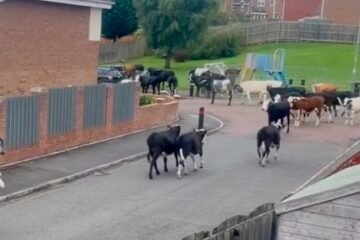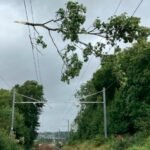Cutting-edge satellite technology is offering new ways to assess and predict landslide risks in Scotland’s peatlands, a vital step in preserving these carbon-rich ecosystems. Researchers from the University of Nottingham and Peatland Action have demonstrated how space-based monitoring could revolutionize large-scale land stability assessments.
Tracking Ground Movement with Satellite Data
Peatland areas are prone to landslides, a natural hazard that has long been difficult to predict. To tackle this challenge, geoscience professor David Large and his team employed interferometric synthetic aperture radar (InSAR) to track ground movement across 20 different sites, spanning from Shetland to Dumfries and Galloway.
This technique allows for:
- The creation of national-scale maps to aid in peatland restoration.
- Monitoring subtle surface movements over time.
- Post-restoration assessments to determine the effectiveness of interventions.
The ability to capture these insights remotely reduces the need for costly and time-consuming ground surveys, making large-scale assessments more feasible.

The Complex Nature of Peatland Instability
Scotland’s peatlands are crucial for biodiversity and carbon storage, but they are also highly vulnerable to erosion and landslides. The terrain’s mix of slides, flows, and bog bursts creates unpredictable conditions, particularly in regions of blanket peat.
Several factors contribute to this instability:
- Peat Thickness Variability: The depth of peat layers can differ greatly even within small areas, affecting stability.
- Geotechnical Uncertainty: Peat has unique physical properties that make traditional engineering assessments difficult.
- Hydrology and Drainage Patterns: Water movement through peat plays a key role in determining where failures might occur.
Until now, these complexities have made large-scale landslide risk assessments difficult. The new research is changing that.
What the Research Reveals
Building on previous studies of Irish peatlands, the findings suggest that natural drainage features within peat layers are key indicators of instability. One of the most intriguing observations is the phenomenon known as “bog breathing”—the cyclical rising and falling of peat due to water absorption and release.
- Peat motion alone does not predict landslides, but areas with high movement are more susceptible.
- Drainage patterns can signal risk, highlighting where interventions should be prioritized.
- Satellite-based monitoring enables proactive measures, reducing reliance on reactive responses after landslides occur.
Future Applications and Next Steps
Peatland Action, a national restoration program, plans to investigate the most at-risk areas identified in the study. The integration of satellite data into regular monitoring efforts could significantly improve land management strategies, ensuring better protection for Scotland’s peatlands.
According to Large, the technology isn’t just useful for conservation. “Our method is ideal for rapidly screening large areas to identify where best to undertake more expensive geotechnical investigations. Potential applications include not only peatland restoration but also wind energy developments on peat,” he explained.
By harnessing satellite technology, Scotland is poised to take a major leap forward in managing its fragile peatland environments, helping to prevent landslides before they happen.


















